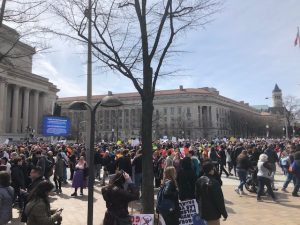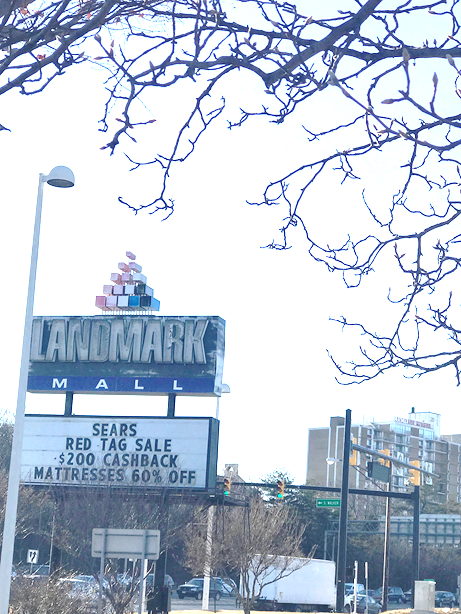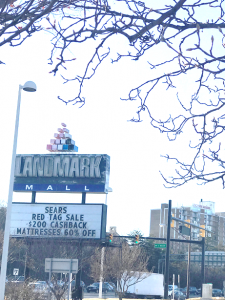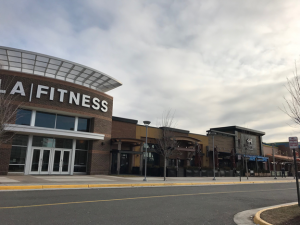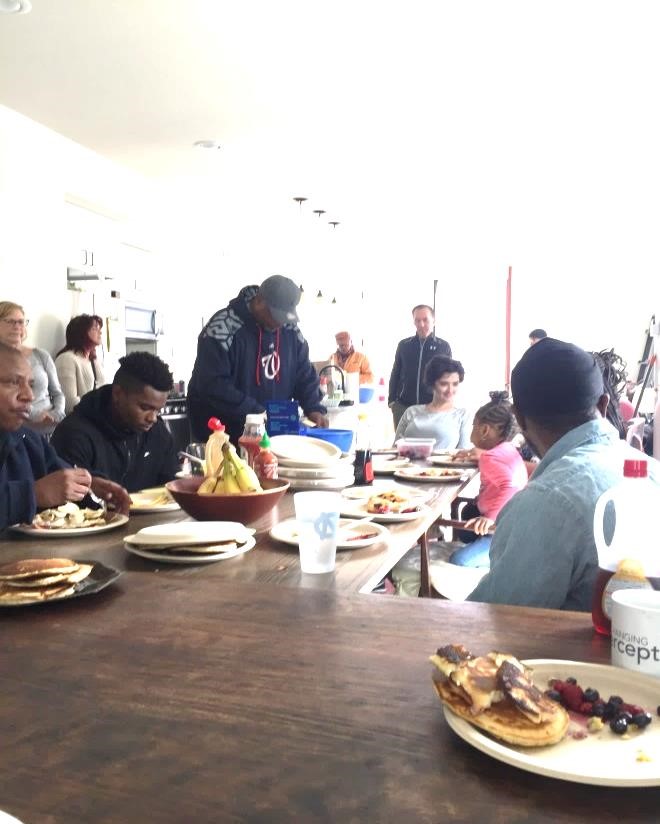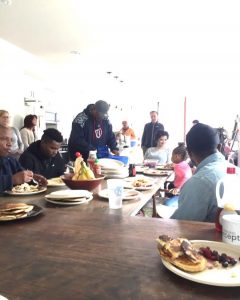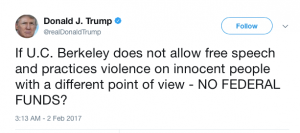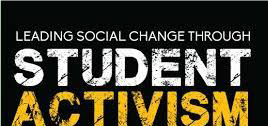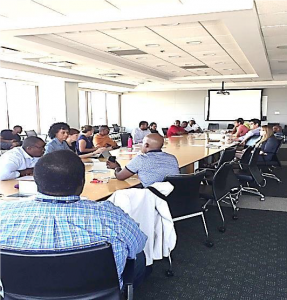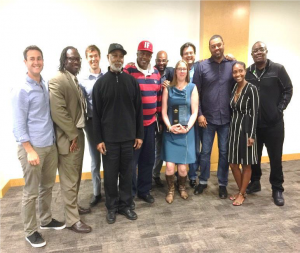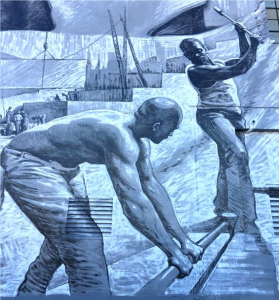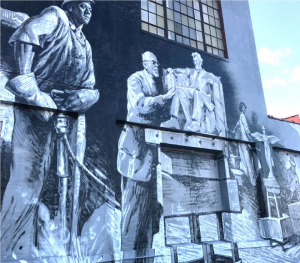By Maria Valdovinos
In the last issue of The Sociologist I wrote about how Pancake Saturday (see Valdovinos February 2018) is not just about breakfast or pancakes for that matter (although there are plenty of them to go around), but rather about building a community and a positive social support network among returning citizens in the District. The most recent Pancake Saturday gathering was extra special; not only did we get to meet the newest cohort of the Aspire to Entrepreneurship program (see Valdovinos October 2017) but breakfast came with a healthy side of public sociology. There was far more listening, dialoguing, and community building than there was eating. We were all pleasantly surprised to see Councilmember Charles Allen stop by to meet the cohort’s newest members and to learn about the challenges of reentry in the District.
Charles Allen represents Ward 6 on the Council of the District of Columbia.1 Allen was elected in 2014 and is up for re-election. He chairs the Committee on the Judiciary and Public Safety2 and serves as the Council’s liaison with key stakeholders in criminal justice and reentry in the District.3 “The goal is not just to make DC a safe city, but also a just city,” Allen said as he shared with everyone his vision and goals for the District if he were to get re-elected.
For the Aspirants4 at the table, the goal of a “just city,” raised many issues of fairness and equity in opportunity, particularly as it pertained to access to traditional jobs, safe and affordable housing and city contracts for the entrepreneurs working to grow their small and local businesses. The Aspirants shared specific challenges they encountered in their reentry experiences, such as not being able to obtain paid sick-time benefits and the fact that “ban the box” still resulted in individuals being denied jobs because of a criminal history. Among the returning citizen entrepreneur group, the issue of access to city contracts came up almost immediately. The Aspirants shared that while the desire is to stay local it is not always to stay “small.” They also shared that they felt their chances to access city contracts were hurt because they could not donate to campaigns. Allen listened intently, noting that the contracting process should never work in a way where campaign donations give people an advantage in obtaining city contracts. He proceeded to explain the current process of securing and awarding contracts in the District, how that process should work and where it could be improved. Before jumping into another round of questions and answers, Allen thanked everyone for their insight, remarking that he had been unaware of some of the issues raised that morning.
As a student in public sociology, I have thought long and hard over the last couple of years about the nature of the public and our responsibility as social scientists to the discipline and civil society. In the past two years especially, I have worked to develop a series of arguments regarding the need to integrate what I have referred to in those papers as “subaltern knowledge” into criminal justice reform policy. Drawing from Antonio Gramsci’s use of “subaltern” in The Prison Notebooks, the use of the term is simply intended to describe how ‘knowledge’ and experiences are frequently and routinely overlooked when they belong to non-hegemonic groups or classes of people that are socially, politically, and geographically on the periphery of hegemonic power structures (Gramsci 1948).
Among the arguments I have made is that the seeming contradiction between public sociology and academic sociology characterizing the “public sociology wars” (Burawoy in Adam et al. 2011) also needs to engage the value placed on alternative and subaltern knowledge by key decision makers (such as policymakers), and the willingness of decision makers to legitimize this kind of knowledge. While far from the ideal of the Habermasian public sphere (where private people gather as a public and have direct access to the state and where this sphere is accessible to everyone), the question and answer forum that I witnessed during the previous Pancake Saturday was encouraging. For me, it reinforced the fact that unlike Weber’s articulation of the people of the state as an inarticulate mass, the public can in fact be very articulate. In the vein of C. Wright Mills and Charles Gallagher, I witnessed the power of linking individual biography and private troubles to public issues via what I have heard Graham McLaughlin refer to as “the ask.” McLaughlin is co-founder and chair of the board at Changing Perceptions.5 This is the idea that raising a question about a seemingly private trouble can reveal the collective and socially embedded nature of that problem potentially leading to a solution for what is in fact a public issue of wide scope.
Over the course of sociology’s history and development, the publics of sociology have included educated elites (Weber 1946), intellectuals more generally (Durkheim 1895), intellectuals and the proletariat with the purpose of mobilizing (e.g. see Marx in Tucker 1978, The Communist Manifesto), intellectuals with the purpose of giving voice to the poor (e.g. see Addams 1910, 20 Years at Hull House), White Americans with the purpose of educating them (Du Bois 1903, The Souls of Black Folk), the sociological profession with the purpose of promoting reflexivity (Burawoy 2005), feminist activist-scholars with the purpose of “talking the talk” and “walking the walk” alongside testing their theories (Collins 1998), or policy audiences (Desmond 2016; Wilson 1990). This list is by no means exhaustive. Contrary to some arguments which have been leveraged within the discipline over the years, I would argue that at no point has science and instrumental rationality been sacrificed whether the move has been away from or towards engaged scholarship–activism.
The arguments I have made over the past two years pertaining to subaltern knowledge and criminal justice reform are at their core emancipatory and imply that the next step in the public sociology wars is to work toward the recognition that the co-production of knowledge is a legitimate and necessary enterprise. Such a step could potentially allow for public sociology and professional sociology to be in dialogue regarding the creation of new research programs and methods rather than a focus on the division of roles where the function of professional sociology is to produce knowledge and the role of public sociology is simply to communicate it.
Such a step could also create necessary and overdue connections with academic circles and policy circles to target urgent problems. In short, we must move from questions of knowledge for what (Lynd 1939), whose side we are on (Becker 1966) and for whom (Lee 1976) to questions such as knowledge from whom? To that end, when my turn to ask a question came, I asked Charles Allen what I thought was a simple question. How can stakeholders such as myself, a sociologist with scientific training, work to connect publics and translate various experiences into forms that are actionable for policy reform? How can we access policy circles to communicate the unintended and potentially harmful outcomes uncovered by the scientific research of some policy reforms (such as ban the box) to policymakers?
Allen did not seem to have a concrete answer. Although, he recognized the importance of the connection between research and policy, it seemed that the proposition I had raised was somewhat of a new idea, potentially unexplored territory. Afterwards, however, one of the Aspirants came up to me and told me that she really appreciated what I had to say, and that she thought “I was someone to be reckoned with,” before quickly walking way. I have to admit that she left me speechless with her comment. The more I have thought about it, the more I realize the power in public sociology to overcome certain counterproductive debates and to refocus that energy into expanding the existing assumptions, theories, concepts, questions so as to catapult the types of changes needed in society. I walked out of that last Pancake Saturday with a strong re-assurance that there is not an essential incompatibility between public sociology and academic sociology.
Notes
- For more information about Charles Allen see http://www.charlesallenward6.com/about
- For more information on the Committee on the Judiciary and Public Safety see http://www.charlesallenward6.com/judiciary
- The stakeholders include the U.S. Attorney’s Office, D.C. Courts, Public Defender Service, Court Services and Offender Supervision Agency, Pretrial Services Agency, Federal Bureau of Prisons, U.S. Parole Commission.
- The term Aspirant is a term used to refer to members of the Aspire to Entrepreneurship program.
- For more information on Changing Perceptions and the Aspire to Entrepreneurship Program see https://www.streetsensemedia.org/article/entrepreneurship-returning-citizens-jobs-reentry/#.WvGg0i-ZORs
References
Addams, Jane. 1910. 20 Years at Hull-House. New York City, NY: The MacMillan Company.
Becker, Howard S. 1966. “Whose Side Are We On.” Social Problems 14:239.
Blau, Judith and Keri E. Iyall Smith, eds. 2006. Public Sociologies Reader. Lanham, MD: Rowman & Littlefield Publishers.
Burawoy, Michael. 2005. “For Public Sociology.” American Sociological Review 70(1):4–28.
Collins, Patricia Hill. 1998. Fighting Words: Black Women and the Search for Justice. Minneapolis: University of Minnesota Press.
Desmond, Matthew. 2016. Evicted: Poverty and Profit in the American City. New York City, NY: Crown Publishers.
Du Bois, W.E.B. 1903. The Souls of Black Folk. Chicago, IL: A.C. McClurg & Company.
Durkheim, Emile. 1895. The Rules of Sociological Method. edited by S. Lukes. New York City, NY: The Free Press.
Gramsci, Antonio. 1948. Prison Notebooks. edited by J. A. Buttigieg and A. Callari. New York, NY: Columbia University Press.
Jeffries, Vincent, ed. 2011. Handbook of Public Sociology. New York City, NY: Rowman & Littlefield Publishers.
Lee, Alfred McClung. 1976. “Presidential Address: Sociology for Whom?” American Sociological Review 41(6):925–36.
Lynd, Robert Staughton. 1939. Knowledge for What: The Place of Social Science in American Culture. New York City, NY: Grove Press, Inc.
Mills, C. Wright. 1959. The Sociological Imagination. New York City, NY: Oxford University Press.
Tucker, Robert C., ed. 1978. The Marx/Engels Reader. New York City, NY: W.W. Norton.
Weber, Max. 1946. From Max Weber: Essays in Sociology. Oxford University Press.
Wilson, William Julius. 1990. The Truly Disadvantaged: The Inner City, the Underclass, and Public Policy. Chicago: University of Chicago Press.


